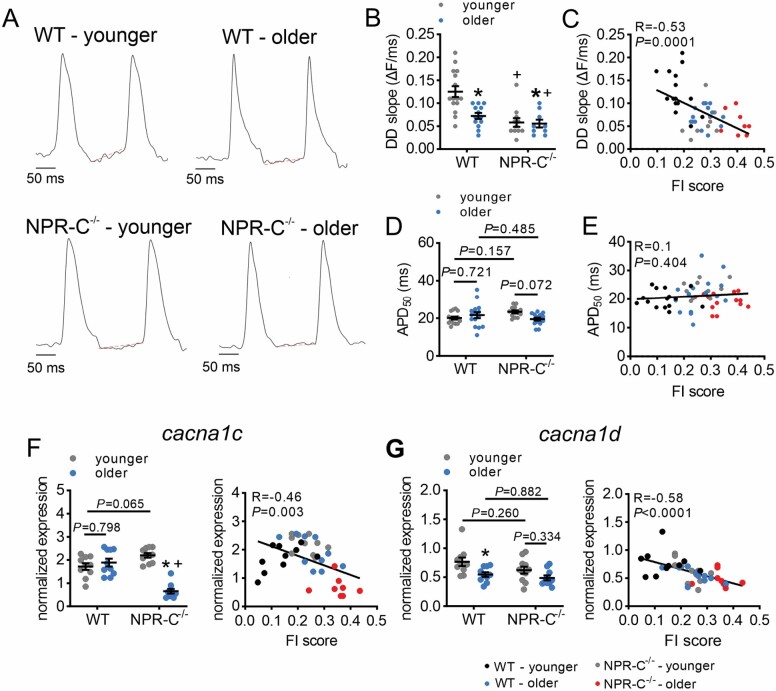Figure 4.
Effects of age and frailty on sinoatrial node action potential morphology in WT and NPR-C−/− mice. (A) Representative sinoatrial node spontaneous optical action potentials in younger and older WT and NPR-C−/− mice. Red lines represent linear fitting of the diastolic depolarization (DD). (B) DD slope in younger and older WT and NPR-C−/− mice, n = 15 mice for WT younger, 13 for WT older, 11 for NPR-C−/− younger, and 9 for NPR-C−/− older. (C) DD slope as a function of FI score for younger and older WT and NPR-C−/− mice (same mice as panel B). (D) Action potential duration at 50% repolarization (APD50) in younger and older WT and NPR-C−/− mice, n = 15 mice for WT younger, 15 for WT older, 13 for NPR-C−/− younger, and 15 for NPR-C−/− older. (E) APD50 as a function of FI score in younger and older WT and NPR-C−/− mice (same mice as panel D). (F) mRNA expression of cacna1c in younger and older WT and NPR-C−/− mice (left panel) and as a function of FI score (right panel); n = 10 mice for WT younger, 10 for WT older, 10 for NPR-C−/− younger, and 10 for NPR-C−/− older. (G) mRNA expression of cacna1d in younger and older WT and NPR-C−/− mice (left panel) and as a function of FI score (right panel); n = 10 mice for WT younger, 10 for WT older, 11 for NPR-C−/− younger, and 10 for NPR-C−/− older. For figures as a function of chronological age and genotype, *p < .05 versus younger; +p < .05 versus WT by 2-way analysis of variance with a Tukey post hoc test. NPR-C = natriuretic peptide receptor C.

